Search Results for Tag: CO2
Unbaking Alaska?
When I first went to Alaska in 2008, “Unbaking Alaska“ was the title of the reporting project on how climate change is affecting the region and what the world might be able to do about it. I had to explain the title to my German colleagues, unfamiliar with the “Baked Alaska” dessert, while my North American and British colleagues thought it was a quirky, witty little title.
This week, when I saw an article in the Washington Post entitled “As the Arctic roasts, Alaska bakes in one of its warmest winters ever”, I found the “dessert” had become a little stale .
The thing about “Baked Alaska” is that the ice cream stays cold inside its insulating layer of meringue. Unfortunately, all the information coming out of Alaska and the Arctic in general at the moment, suggest that the ice is definitely not staying frozen.
Too hot for comfort?
In the Washington Post article, Jason Samenow refers to this winter’s “shocking warmth” in the Arctic, some seven degrees above average. Alaska’s temperature, he says, has averaged about 10 degrees above normal, ranking third warmest in records that date back to 1925. Anchorage has found itself with a lack of snow.
“This year’s strong El Nino event, and the associated warmth of the Pacific ocean, is likely partly to blame, along with the cyclical Pacific Decadal Oscillation – which is in its warm phase”, Samenow writes. Lurking in the background is that CO2 we have been pumping out into the atmosphere over the last 100 years or so.
Sea ice on the wane?
Meanwhile, the Arctic sea ice is at a record low. Normally, in the Arctic, the ocean water keeps freezing through the entire winter, creating ice that reaches its maximum extent just before the melt starts in the spring. Not this time.
Yereth Rosen wrote on ADN on Feb. 24th the sea ice had stopped growing for two weeks as of Tuesday. He quotes the NSIDC as saying the ice hit a winter maximum on February 9th and has stalled since.
“If there is no more growth, the Feb. 9 total extent would be a double record that would mean an unprecedented head start on the annual melt season that runs until fall”.
This would be the earliest and the lowest maximum ever. Normally, the ice extent reaches its maximum in early or mid-March.
The most notable lack of winter ice has been near Svalbard, one of my own favourite, icy places.
The experts say it’s too early to say whether this is “it” for this season. There is probably more winter to come. But even if more ice is able to form, it will be very thin.
Toast or sorbet?
Coming back to those culinary clichés: Samenow in the Washington post writes of the second “straight toasty winter” in the “Last Frontier”. The links below his online article are listed under “more baked Alaska”. Amongst them I find the headline: “As Alaska burns, Anchorage sets new records for heat and lack of snow” and “Record heat roasts parts of Alaska”.
The trouble comes when these catchy titles become clichés and somehow stop being quirky.
Don’t we run the risk of not doing justice to the serious threat climate change is posing to the most fragile regions of our planet? Sometimes I worry that the warming of the Arctic is becoming something people take for granted, and, even more dangerous, something we can’t do much about. At times I sense a cynicism creeping in.
I for one will be keeping my oven-baked cake and chilled ice cream separate this weekend.
Is it possible to un-bake Alaska? Food for thought.
Picture gallery on “Baked Alaska” expedition.
Anthropocene: No ice age – more blizzards?
If you are sitting somewhere on the East Coast of the USA, struggling to cope with 30 inches of snow, you might be forgiven for reacting with relief to a report released by the Potsdam Institute for Climate Impact Research (PIK) indicating human-made climate change is suppressing the next ice age. With a wink in your eye, you might be very grateful that these extreme conditions are only going to last for a few days and not become the everyday normality of a new ice age.
There are those (but increasingly few of them) who might even thank the fossil fuels industries for averting a scenario like “The Day after Tomorrow” and ensuring that the relatively comfortable interglacial in which we live is likely to continue for the next 100,000 years. That is the conclusion of the study published in the scientific journal Nature.
The problem is that postponing an ice-age illustrates that human interference with natural climate cycles over a relatively short time has the potential to change the world for a hundred thousand years to come, with all the problems that come with it. And given that the increase in extreme weather events like the US snowstorm is highly probably related to anthropogenic climate change, perhaps an ice age in 50,000 years would be the lesser evil.
Burn fossil fuels, suppress the ice age
Using complex models to try to find out which factors influenced the last eight glacial cycles in earth history and what is likely to lie ahead of us, the scientists found that as well as astronomical factors like the earth’s position in relation to the sun in different stages of its orbit, the CO2 concentration in the atmosphere is a key factor.
I talked to physicist and earth systems modeler Andrey Ganopolski, lead author of the study to find out more about the research and the background.
According to Milankovich’s theory, a new ice age should occur when the earth is far away from the sun and summer is colder than usual in the northern hemisphere, at high latitudes in Canada and northern Europe. These are the areas where big ice sheets can grow. At the moment, Ganopolski explained, we have a situation where our summer occurs when the earth is far from the sun. So in principle, we have the conditions when a new ice age can potentially start. He and his colleagues wanted to understand why we are not living in an ice age when astronomically, the conditions are just right to move towards a new ice age.
Meddling with the planet
They come to the conclusion that naturally, without any anthropogenic influence, we would expect the new ice age to start around 50,000 years from now. That would mean that this interglacial, the Holocene, in which we live now, would already be unusually long. In the past, an interglacial lasted only 10 or 20,000 years, but this one is expected to last for 60,000 years.
But our emissions of greenhouse gases are postponing this even further. Relatively large anthropogenic greenhouse gas emissions – say two to three times what we already emitted – would, according to the scientists’ model, additionally postpone the next ice age, so that it would only start 100, 000 years from now, so we would completely skip one glacial cycle, which never happened in the last three million years.
Humankind as a geological force
Now regardless of whether you are a fan of ice and snow or one of those who say they can happily live without any more ice ages, the study’s findings illustrate just how long anthropogenic influence on climate will continue. Humanity, it seems, has become a geological force that is able to suppress the beginning of the next ice age, according to the PIK experts. Human behavior is changing the natural cycles that have shaped the global environment and human evolution.
Over the last 3 million years, glacial cycles were more or less regular. Most of the evolution of humans occurred during those last three million years. Ganopolski says humans can be seen as a kind of product of glacial cycles, because the conditions were probably right to increase the size of our brain, because we had to be clever to survive in such a variable climate.
Who cares?
But given that it is easier and pleasanter to live in non ice-age conditions, there is still an understandable tendency to respond to the ice-age-postponement announcement with: “so what?”
Ganopolski argues one reason the study is significant is that it does away with the arguments of some climate skeptics who have argued that warming the atmosphere by burning fossil fuels is not a bad thing, because it could avert an “imminent” ice age (a theory first made popular around thirty years ago, he says). Since the research indicates there is none on the horizon for more than 50,000 years anyway, this is nonsense, says Ganopolski.
But the main reason the research findings deserve attention, he says, is that they show we can affect the climate for up to a hundred thousand years. He believes a lot of people think if we stop using fossil fuels tomorrow or the day after, everything will be fine. In fact, anthropogenic carbon dioxide will stay in the atmosphere for an extremely long time. “That means we are affecting earth’s future on a geological time scale”, he says.
Whether the next ice age comes in 50,000 or 100,000 years may seem irrelevant to a lot of people, faced with the concerns of life today. But the effects of our warming the globe are already being felt and will have considerable implications well before that, Ganopolski reminds us. He says the new study just shows how massive our interference with the earth’s systems is, and backs up the need to take action now to cut greenhouse gas emissions.
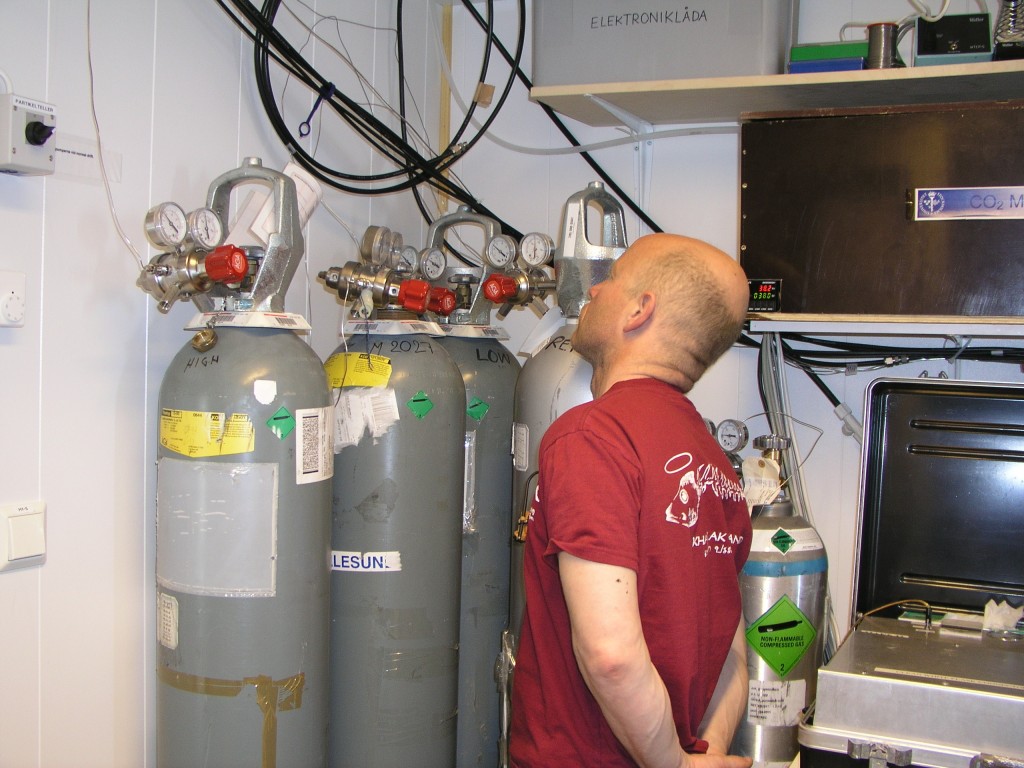
Rising CO2 emissions are influencing glacial patterns (Measuring station on Svalbard, Pic. I. Quaile)
Greenland and Antarctic in the Anthropocene
He mentions the research also deals with Greenland and Antarctica:
“What we show is that even with the CO2 concentration we have already, we can expect that a substantial fraction of these ice sheets will melt. So obviously, in this respect, any further increase of CO2 will have even more negative effects”.
Sea level rise, ocean acidification, changing food supplies, floods, droughts…and, yes, even more of those extreme blizzards, fuelled, paradoxically, by warming seas…maybe there is more to this delaying the ice age business than first seemed.
So are we living in the “Anthropocene”, i.e. an era in which not nature but humankind is determining the shape of the world we live in now and for centuries to come? Ganopolski and his colleagues say yes. He stresses what we are doing to the climate and the speed at which it is happening represent unprecedented, substantial deviation from the natural course of things.
“So if you continue to emit a substantial amount of carbon dioxide, the Anthropocene will last for hundreds of thousands of years, before systems return to anything like “normal” conditions”, he says.
Another study published in Nature today provides further evidence that human intervention is responsible for the annual heat records that have been in the news so often recently they run the risk of losing their news value. Ganopolski’s PIK colleague Stefan Rahmstorf, one of the authors, says the heat records, with 13 of the last 15 years the warmest since records began, can no longer be explained by natural climate variation. But they can be explained by human-induced climate change.
But is there any point in making potentially uncomfortable changes to the way we live today if we have already changed the atmosphere so massively, for such a long time to come? Ganopolski stresses the extent and speed of the changes and impacts are no grounds for resignation:
“There is no justification for making the climate even warmer than it is. It is a matter of how much CO2 we will emit into the atmosphere. Basically, it will affect all generations, and if we care about them, we should stop using fossil fuel as soon as possible.”
Sounds sensible to me.
Can Paris avert climate threat to cryosphere?
To those of us who work on polar subjects, there is no question about the relevance of the cryosphere to the annual UN climate negotiations. But in the run-up to the annual mega-event – especially in a year dubbed by some to be the “last chance” for climate – it was not easy to get attention for the Arctic, Antarctic and high-altitude peaks and glaciers of the world.
I had a discussion with some of my colleagues who focus on Africa and Asia. With problems like political unrest, wars, famine and drought to cope with, the fate of polar bears, one told me, is completely irrelevant.
You could say this colleague is suffering from a kind of tunnel vision. But it also prompts me to wonder whether the way we communicate the threat of climate change is partly to blame.
Not just polar bears
Earlier this week I read about a study indicating that people were more likely to donate to campaigns which focus on people, on social injustice rather than on conservation and environmental degradation. Somehow, we journalists have to make the connection between the two. When you remind people that increasing sea levels caused to a large extent by changes in our ice sheets pose a huge threat not only to small island states but to many of the world’s megacities, the cryosphere takes on a new relevance. Not to mention the fact that the ice, snow and permafrost covered regions of our planet play a major role in regulating the world’s climate and water supplies.
One organization that works to bring the attention of delegates at the UN climate talks to our icy regions is the International Cryosphere Climate Initiative, ICCI. In time for this year’s COP21, it commissioned a report from leading scientists: “Thresholds and closing windows. Risks of irreversible cryosphere climate change”. The report summarizes the levels of risk in five key areas: ice sheets loss and related sea-level rise, polar ocean acidification, land glacier loss, permafrost melt, and the loss of Arctic summer sea ice. The report is based on the last IPCC assessment plus literature published in the three years since.
Bringing the ice closer
Pam Pearson is the director and founder of ICCI. I have interviewed her on various occasions, including during visits she made to Bonn, the home of the UNFCCC, to brief delegates. This time we were not able to meet in person, but we have been in Email contact. I asked her how difficult it was to arouse interest within the negotiations at the moment, with so much going on. She told me it was difficult mainly because very few people globally actually live near cryosphere.
“Yet we are all deeply connected to these regions, because of their role in the Earth climate system — especially through sea-level rise, water resources from land glaciers, and permafrost release that will make it harder to meet carbon budgets. “
The Arctic, parts of Antarctica and many mountain regions have already warmed two to three times faster than the rest of the planet, between 2 and 3.5 degrees Celsius up on pre-industrial levels. Climate change is also affecting high altitude areas such as the Himalayas and the Andes, where seasonal glacier melt provides water for drinking and irrigation, especially in dry periods.
When the outside risk becomes the norm
The changes are far more extreme than those forecast in even the most pessimistic scenarios of a few years ago. In the IPCC’s 2007 Fourth Assessment, the outer extreme estimate for sea level rise (mostly from glacier ice melt) was about one meter by the end of this century. Today, the experts say even if we could halt warming now, it would be impossible to avoid sea-level rise of one meter from glaciers, ice sheets and the natural expansion of warming waters, within the next two hundred years. Most scientists also agree that the West Antarctic ice sheet has already been destabilized by warming to the extent where this probably cannot be halted, which will increase sea level further.
Pearson used to be a climate negotiator herself, so she knows the pressures and constraints. She told me that while participants in the climate conferences were broadly aware of issues like ice melt at the poles and on high-altitude glaciers, they tended to lack awareness of two key aspects:
“First, that we have already passed, or are close to passing temperature levels that will cause certain processes to begin; and second, that some of these processes cannot be stopped once they get started.”
She says a “sense of urgency” is lacking, and stresses that although some of the most damaging consequences will only occur in hundreds or even thousands of years, they will be determined by our actions or inactions in the coming few decades. That includes the 2020-30 commitment period that is the focus of the agreement being worked on in Paris Pearson stresses.
The cryosphere needs more ambitious targets
The report analyses the implications of the INDCs, or current pledges put on the table by the countries of the world for the Paris climate talks. The scientists come to the conclusion that these will not be enough to prevent the onset of many irreversible cryosphere processes.
Even the two-degree pathway agreed by the international community translates into a peak cryosphere temperature of between 4 and 7 degrees above pre-industrial levels, according to the ice experts. Yet the UN and others say current commitments would lead to global temperatures 2.7 to 3.5 degrees Celsius above pre-industrial levels by 2100, rising later to between 3.4 and 4.2 degrees. The peak in global carbon emissions would occur well after 2050. The associated temperatures would trigger permanent changes in our ice and snow that cannot be reversed, including the complete loss of most mountain glaciers, the complete loss of portions of West Antarctica’s Ice Sheets and parts of Greenland. This would ultimately equate to an unstoppable sea level rise of a minimum four to ten meters, the scientists find.
In addition, the increase of CO2 being absorbed in the Southern Ocean around Antarctica and the Arctic Ocean is turning the water more acidic and so threatening fisheries, marine ecosystems and species.
Another of the key issues which is often neglected is that of permafrost. About a quarter of the Northern Hemisphere’s land area contains ground that remains frozen throughout the year. This holds vast amounts of ancient organic carbon. So when it thaws, carbon dioxide and methane are released, which fuel further warming. Even a temperature rise of 1.5 degrees could result in a 30% loss of near-surface permafrost. This would mean 50 Gigatonnes of additional carbon emissions by 2100. Given that the total carbon budget allocated to a two-degree temperature rise is only 275 Gigatonnes, that would be a huge factor. The ICCI experts say this thaw would not be reversible, except on geological time scales.
Dwindling Arctic sea ice
Arctic summer sea ice has declined rapidly, especially since 2000. Only about half the sea ice survives the summer today compared to 1950. This is “both a result and a cause of overall Arctic and global warming”, according to the ICCI report. White ice reflects heat into space. When it melts, it is replaced by dark water, which absorbs the heat, exacerbating warming further.
The Arctic sea ice has a tempering effect on global temperatures and weather patterns. It would only be possible to reverse the disappearance of the ice in summer with a return to regular global temperatures of 1 to 2 degrees above pre-industrial times, according to the report.
Andes and Himalayas
Receding mountain glaciers in the European Alps, American Rockies, Andes and East Africa were among the first identified, visible impacts of climate change, originally from natural factors. Sometime in the past 50 years, anthropogenic climate change surpassed natural warming as the main driver of retreat, and caused about two-thirds of glacier melt between 1991 and 2010, according to the ICCI report.
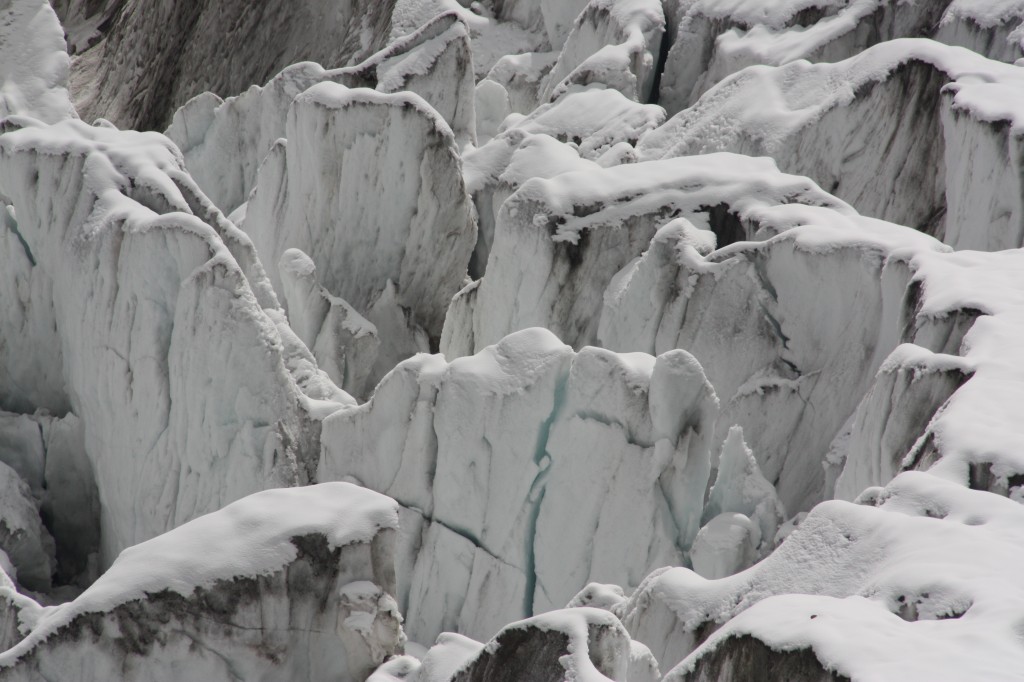
Glaciers – beautiful but highly endangered, like this one I visit regularly in the Swiss alps. (Pic. I.Quaile)
Glaciers are important to nearby communities as a source of water for drinking or irrigation. Some are especially important in dry seasons, heat waves and droughts. Melting glaciers provide an increase in water for a limited time. But ultimately, the lack of water could make traditional agriculture impossible in some regions of the Himalayas or the Andes.
So unless governments in Paris move fast to increase their commitments and bring the deadlines for emissions reductions forward, the windows to prevent some of these irreversible impacts on the polar and high mountain regions may close during the 2020-2030 commitment period.
It is not too late
However, the scientists stress that it is still possible to reduce emissions to the required level, if the political will becomes strong enough. Pam Pearson says the world has to get onto the path towards the two-degree goal now. Like many experts, she says this in itself is risky enough for the cryosphere, and a 1.5 degree pathway would be safer:
“So if countries indeed agree with UNFCCC chief Christiana Figueres’ proposal to meet every five years to strengthen INDCs, moving onto these lower-temperature pathways should be a concrete goal. Perhaps even more important, I understand the French COP presidency may be aiming at strengthening actions PRIOR to 2020, in the 2015-2020 period. This kind of earlier action is really vital, and will make the job of keeping temperatures as low as possible easier”
Without much more ambitious targets, the ICCI study concludes it will be “close to impossible” to avoid rapid deterioration of our snow and ice regions.
The challenge is to make the delegates in Paris understand that that does not just mean cosmetic changes to distant parts of the globe, but that it would also destabilize the global climate, displace millions of people and endanger food and water supplies in many parts of the world.
Arctic plastic “garbage patches”
There are a lot of things you might want to discover on a research cruise in the Arctic. Chunks of plastic floating around are not amongst them. But that is just what biologist Melanie Bergmann and her colleagues from the Alfred-Wegener-Institute and the Belgian Laboratory for Polar Ecology repeatedly did find while they were cruising through the Fram Strait, between Greenland and Svalbard.
They have just published a study documenting that plastic garbage has even reached the far north of the planet. In the online portal of the magazine Polar Biology, they describe how they found plastic waste floating on the surface of the ocean.
Plastic pollution – a fact of life?
In 2012, Bergmann and her colleagues took the opportunity of joining a cruise on the German research ship Polarstern to the Fram Strait to measure the extent of plastic pollution there. They monitored the ocean surface from the boat and a helicopter. Over 5,600 kilometres they found 31 pieces of plastic rubbish. But that will only be the tip of the “garbage-berg”.
“Since we were counting from the bridge of the ship, which is 18 metres above the sea surface, or from the helicopter, we primarily found large pieces of flotsam”, Bergmann told journalists. “So our figures very probably under-estimate the actual amount of garbage”, she added.
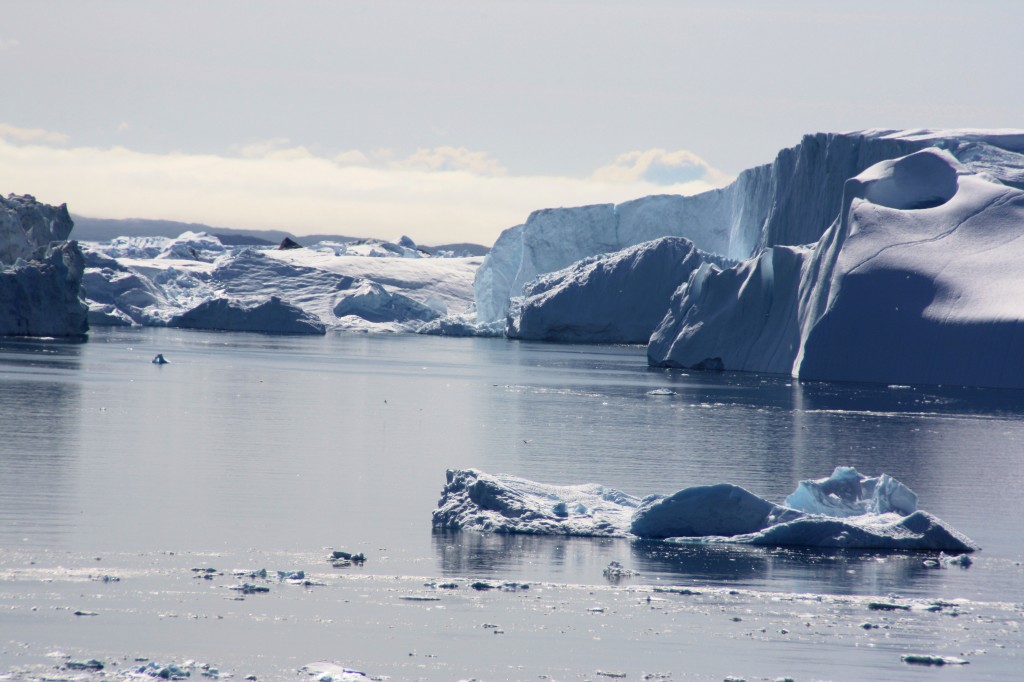
Too beautiful to “waste”? The team even found plastic waste in Greenland’s Ice Fjord (Pic: I. Quaile, Ilulissat)
Plastic waste tends to disintegrate into small pieces, just one or two centimeters in size, if they float in the sea for any length of time.
Somehow, the results of this study did not really surprise me. That, I think, is a very sad state of affairs. There have been so many reports of plastic particles being found in animals and birds and so in our human food chain that there is a danger we take this serious form of pollution for granted. The ngo Ocean Care estimates that around nine million tons of plastic waste finds its way into the oceans every year.
The seabed as a waste dump?
The AWI scientists say this is actually the first study to show that plastic waste is floating around on the surface of Arctic waters. For an earlier study, the German biologist searched for plastic, glass and other waste on photos taken of the Arctic seabed. She found that even in deep sea areas, the amount of garbage has increased in recent years. The concentration is 10 to 100 times higher than on the surface. The experts deduce from this that garbage ultimately sinks to the bottom and collects there.

Plastic bag at the HAUSGARTEN, the deepsea observatory of the Alfred Wegener Institute in the Fram Strait. This image was taken by the OFOS camera system in a depth of 2500 m. Photo: Alfred-Wegener-Institut/Melanie Bergmann/OFOS
The question is: how does this waste get up into the Arctic? It could, it seems be part of what, is described as a “garbage patch”, created when plastic waste gets caught up in ocean currents and concentrated into a kind of whirlpool.
Scientists have already identified five of these patches around the globe. The waste in the Arctic appears to be part of a new, sixth “patch” developing in the Barents Sea. What a depressing development! Scientist Melanie Bergman thinks it probably contains waste from the densely populated coastal regions of northern Europe.
“It is thinkable, that some of this garbage drifts north and northwest, as far as the Fram Strait”, she says. Another theory, she says, it that the garbage being found in the Arctic is caused by the retreat of sea ice.
“More and more fish trawlers are following cod further north. Presumably, rubbish from the ships ends up in Arctic waters, either deliberately or by accident. We are assuming that this trend will continue”, says Bergmann.
Climate change and pollution threat
So while here in Bonn, just across the road from my office, the UN climate secretariat is struggling to come up with a draft text for the Paris COP21 summit, which will be acceptable to all parties (and so subject to so many compromises and loopholes?), we have yet another sign of a climate change impact on the no-longer-pristine Arctic. And at the same time, it indicates the effects our unsustainable lifestyles are having on the environment of the planet. I have been witness to many arguments over whether governments should put more effort into combating climate change or environmental degradation and pollution. Ultimately, once more I come to the conclusion that it is virtually impossible to separate the two.
Last week I interviewed two experts on different aspects of ocean protection for a Living Planet special: Oceans under Pressure. They expressed similar views on the intrinsic connections between climate change, humans’ maltreatment of the environment and the health of the oceans on which we rely for survival. Not only are we causing climate change. The other pressures we put on the oceans make it less able to cope.
Tony Long is in charge of work against illegal fishing with Pew Charitable Trusts:
“I think climate change, over-fishing and illegal fishing are all linked in one way or another. The bad practices that occur from illegal fishing can damage the ecosystem, whether it be trawling and ripping up corals, or fishing the wrong species at the wrong time. It all has an effect on the broader ecosystem. And with ocean acidification and the changes that are taking place now scientifically proven, that’s going to reduce the amount of fish people can catch, if we don’t start to look after it. So actually it should all be seen as one”. (Read the interview here).
Ove Hoegh-Guldberg is Director of the Global Change Institute at the University of Queensland, Australian, and chief scientist with the XL Catlin Seaview Survey, which has been monitoring the state of the world’s coral reefs, including the current global bleaching event:
“On our current track where we’re polluting local water, we’re overfishing coral reefs and now we’re rapidly changing the temperature and acidity of the ocean, we won’t have coral reefs and it will be a very long time before they come back – probably well after our exit from the climate. We are the first generation to see these types of impact and we are going to be the last that has the chance to do something. We must get to very low CO2 emission rates as soon as possible, hopefully over the next 20 to 30 years. Because if we don’t – it won’t just be coral reefs. It will be a large number of other ecosystems that go, and humanity will be in trouble.” (Read the interview here.)
I rest my case.
Polar ice set for six-metre sea level rise?
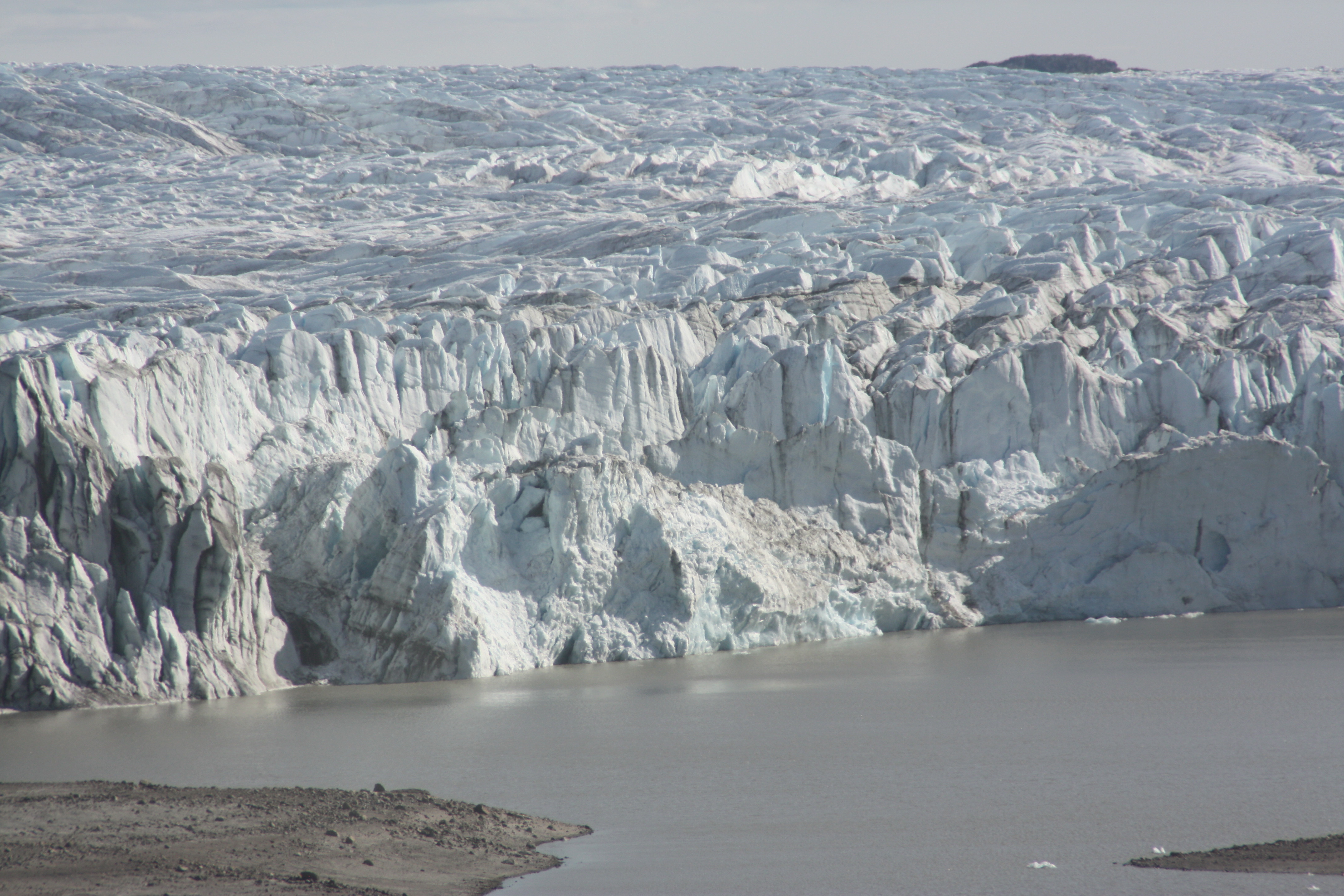
Small increases in global average temperature may eventually lead to sea level rise of six metres or more, according to evidence from past warm periods in Earth’s history.
That was the worrying message from a paper published in the journal Science this week. The researchers, part of the international “Past Global Changes” project, analysed sea levels during several warm periods in Earth’s recent history, when global average temperatures were similar to today or slightly warmer – around 1°C above pre-industrial temperatures.
I was able to talk briefly to one of the authors, Stefan Rahmstorf from the Potsdam Institute for Climate Impact Research (PIK), who was in Paris at the international scientific conference “Our common future under climate change” this week. (The article I wrote on that event, billed as the biggest climate science gathering ahead of the key COP in Paris in December, and the full interview with Rahmstorf are online now).
Rahmstorf described the new study on polar ice sheet disintegration and sea level as “a review of our state of knowledge about past changes in sea level in earth’s history, especially looking at all the data we have on past warm periods, due to the natural cycles of climate – the ice age cycles – that come from the earth’s orbit.”
He went on: ”We have had warmer times in the past, the last one was about 120,000 years ago, and we find that invariably, during these warmer times, the sea level was much higher. It was at least about six meters higher than today, even though temperatures were only a little bit higher, maybe one to three degrees warmer – depending on what period you are looking at – compared to the pre-industrial climate.”
Bad news for coastal dwellers
Not happy reading for anyone living close to the coast, if you look at temperature development today:
“Basically the message is: the kind of climate we are moving towards now – even if we limit warming to two degrees – has in the past always been associated with a sea level several metres higher, which would of course have catastrophic consequences for many coastal cities and small island nations.”
With warming currently on course to reach four degrees and more by the end of this century if greenhouse gas emissions continue on their present trajectory, this message adds yet another piece of evidence to motivate the world’s governments to come up with a new World Climate Agreement at the UN Paris summit at the end of the year – and to get moving towards a zero-carbon economy asap.
The interdisciplinary team of scientists concluded that during the last interglacial warm period between ice ages 125,000 years ago, the global average temperature was similar to the present, and this was linked to a sea-level rise of 6 to 9 metres, caused by melting ice in Greenland and Antarctica. Around 400,000 years ago, when global average temperatures were estimated to be between 1 to 2 degrees Celsius higher than –pre-industrial levels, sea level reached 6 to 13 meters higher. The lead author of the study, Andrea Dutton from the University of Florida, told journalists global average temperatures were similar to today during these recent interglacial periods, but polar temperatures were slightly higher. However, she stressed: “The poles are on course to experience similar temperatures in the coming decades”.
The Arctic is currently warming faster than the global average. IPCC estimates indicate that it could be almost two degrees warmer by 2100 compared with the temperature from 1986 to 2005 – IF the two-degree target is adhered to. Otherwise, it could rise by as much as 7.5°C.
Speed of sea level rise hard to predict
The authors of the study stress that the further back you go (they tried to estimate sea level as long as three million years ago), the more difficult it gets to calculate precisely how high sea level was, given that geological forces push and pull the Earth’s surface and can also cause vertical movement measuring tens of metres. This makes it hard to separate the geological changes in shoreline position from sea level rise caused by polar ice sheet disintegration.
Still, the authors point out that small temperature rises of between one and three degrees were, in the past, like today, linked with magnified temperature increases in the polar regions, which lasted over many thousands of years.
They conclude that even keeping to the overall two-degree warming limit is no guarantee: “Even this level sustained over a long period of time carries substantial risk of unmanageable sea level rise, not least because carbon dioxide remains in the atmosphere for over a thousand years”.
The researchers are not able to say how fast sea levels rose in the past, which would be a key piece of information for planning adaptation. Further research will be necessary for that.
Co-author Anders Carlson of Oregon State University says by confirming that our present climate is warming to a level associated with significant polar ice-sheet loss in the past, the study us providing “perhaps the most societally relevant information the paleo record can provide”.
Carlson heads the PALSEA2 Working Group, hosted by the Past Global Changes (PAGES) project, which used computer models and evidence from around the globe to come up with the conclusions in the study.
Stefan Rahmstorf draws a clear conclusion from the results of this research and other recent studies on instabilities in the Antarctic ice sheet and changes in ocean currents:
“This really calls for limiting warming to 1.5 degrees. And it is still feasible to limit warming to 1.5 degrees. But that requires a much stronger political will than we currently have”.
Still, the Potsdam professor is more optimistic than he used to be that advances in renewable energy and other technologies and growing awareness of the negative impacts climate change is already having around the globe could mean the UN Paris conference at the end of the year will mark a turning point.
Not that he thinks Paris can “do it all”. As you’ll see if you read my interview with him, he is hoping for the start of a process similar to the Montreal Protocol, where the original agreement was not too strong, but worked eventually by toughening up as it went along. Now that would be really good news. He told me it was time to “turn the tide of rising emissions”. Here’s hoping it happens in time to keep the sea level around the world well below that six metres that were there in the past.




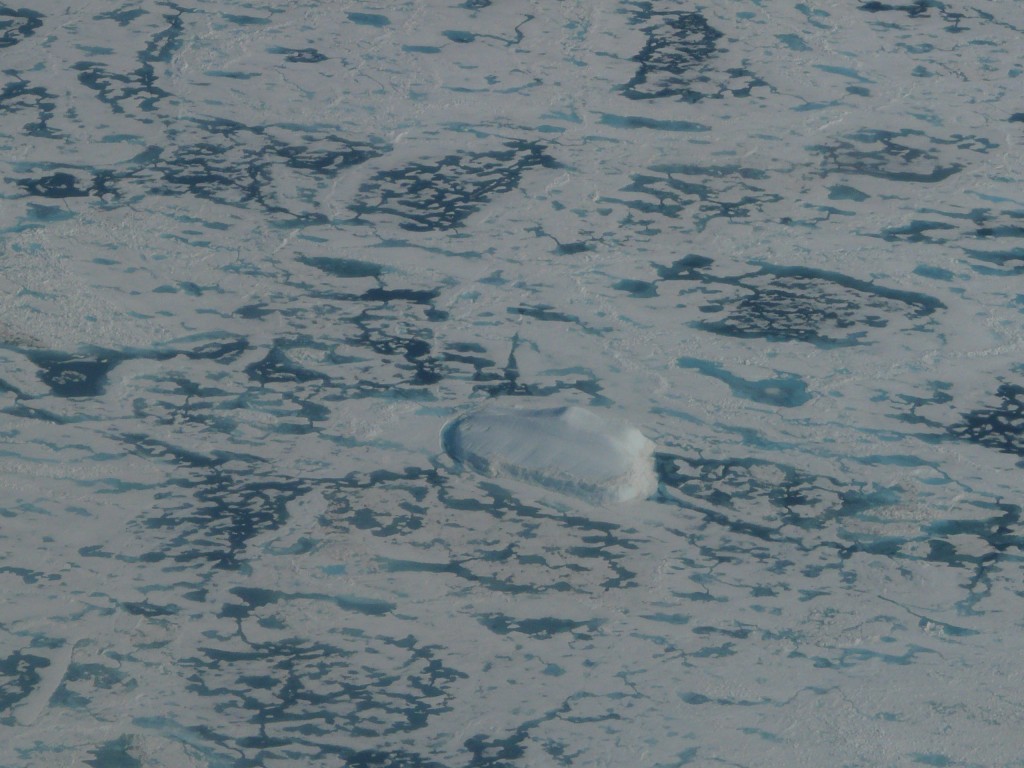
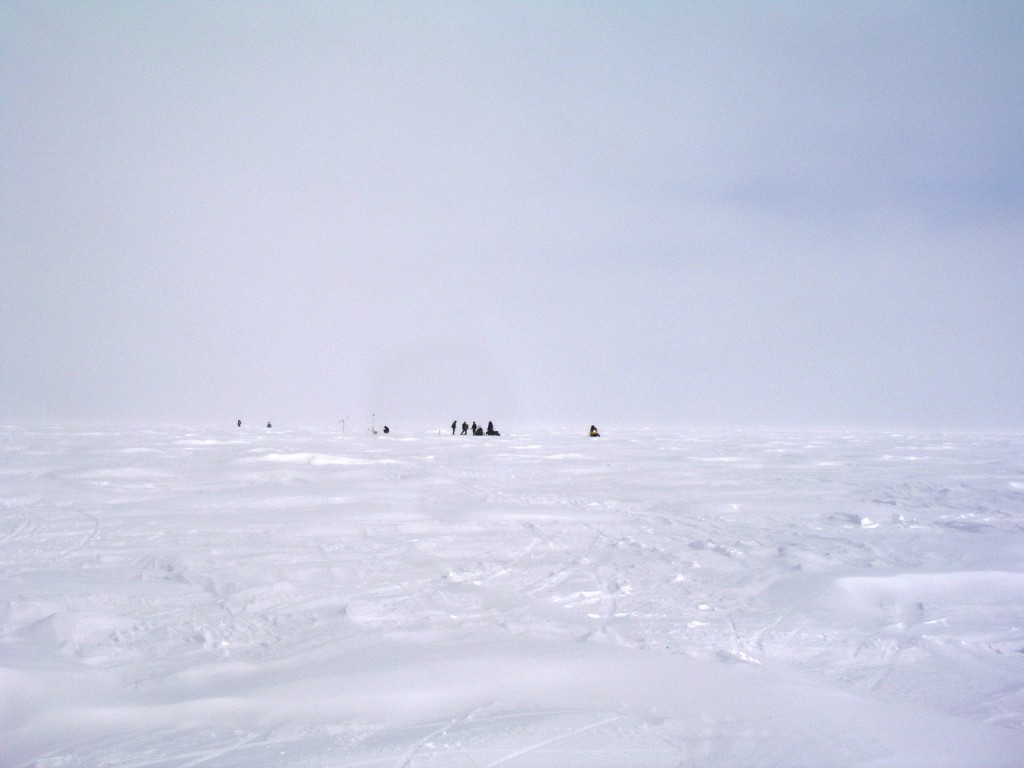


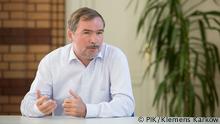

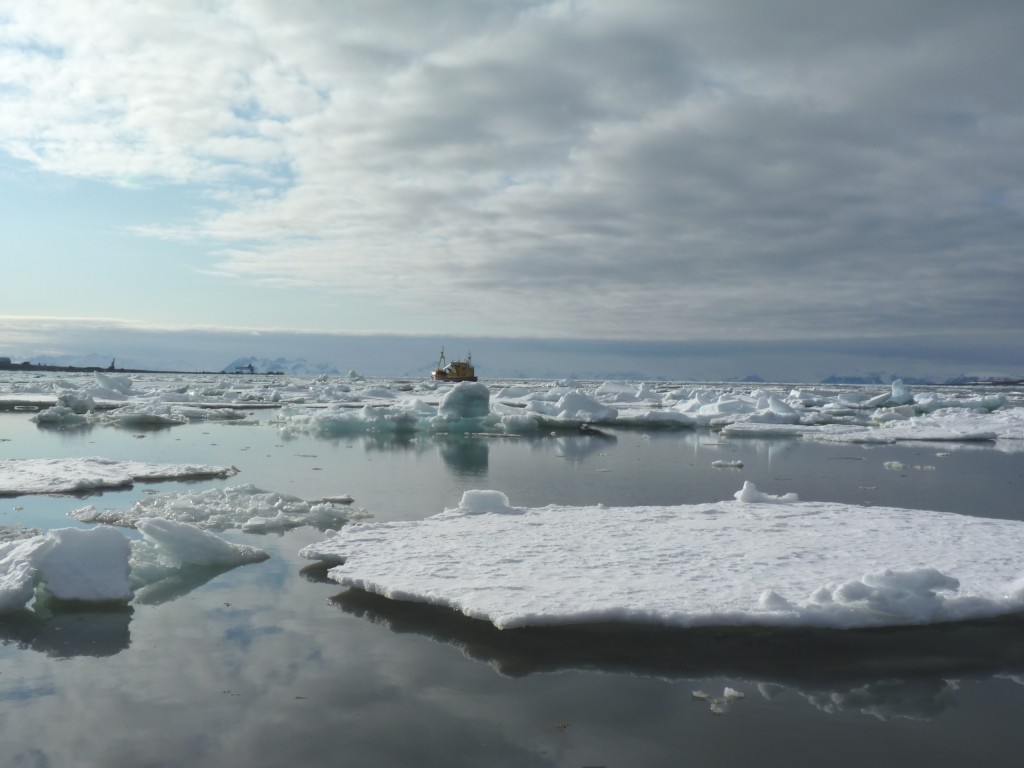
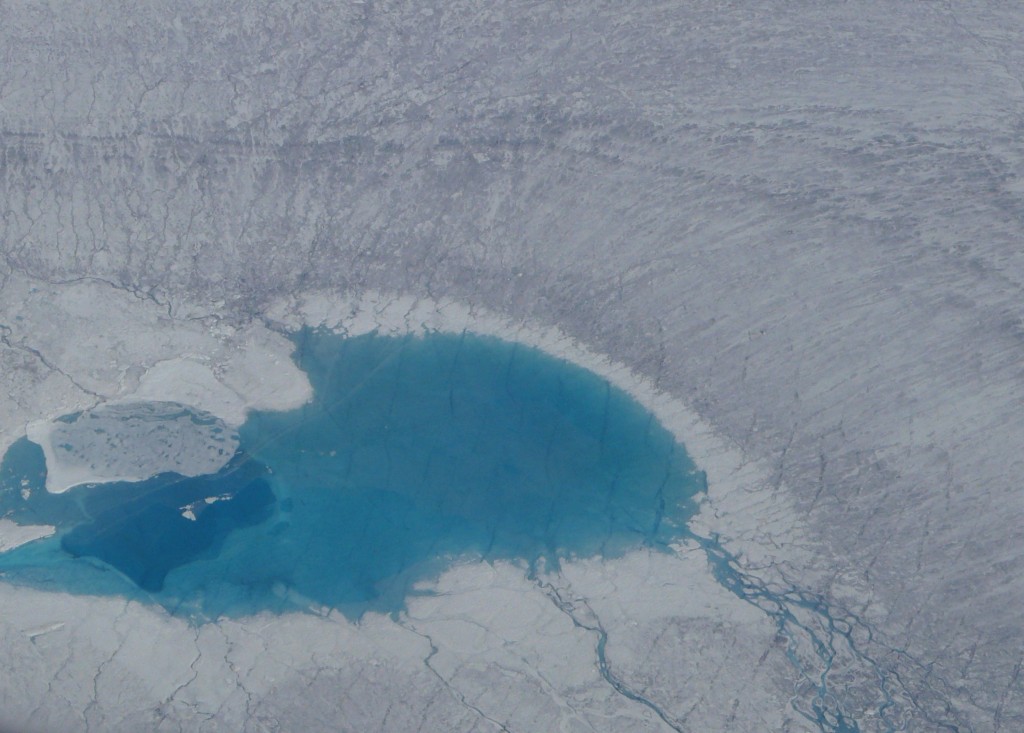
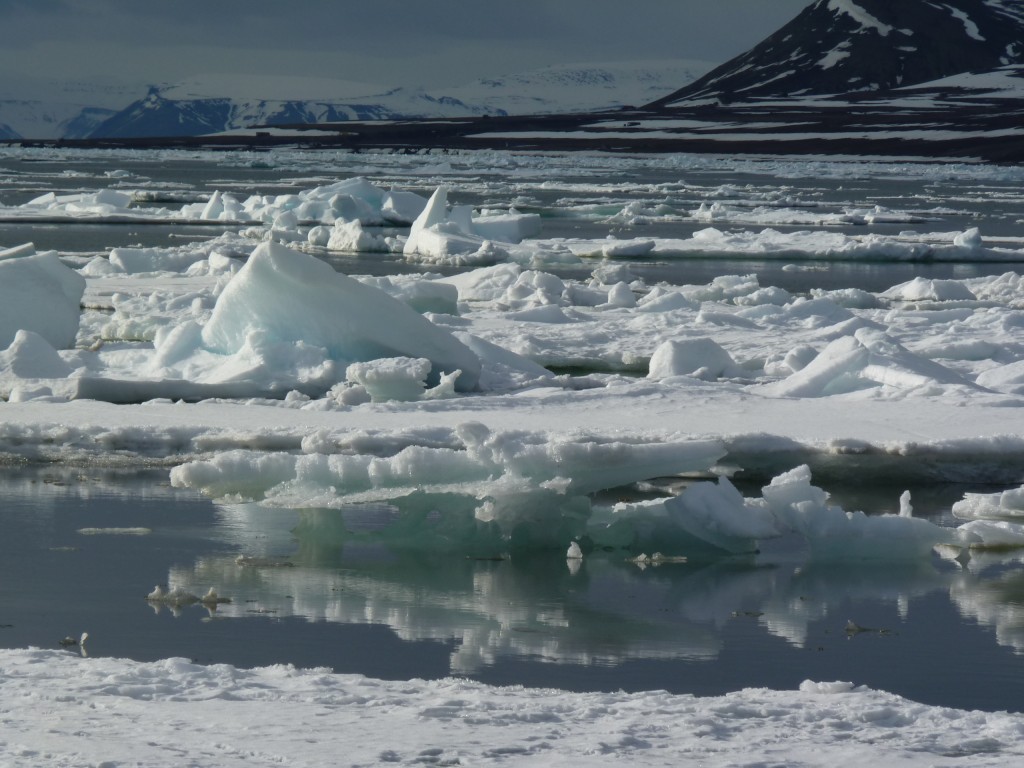
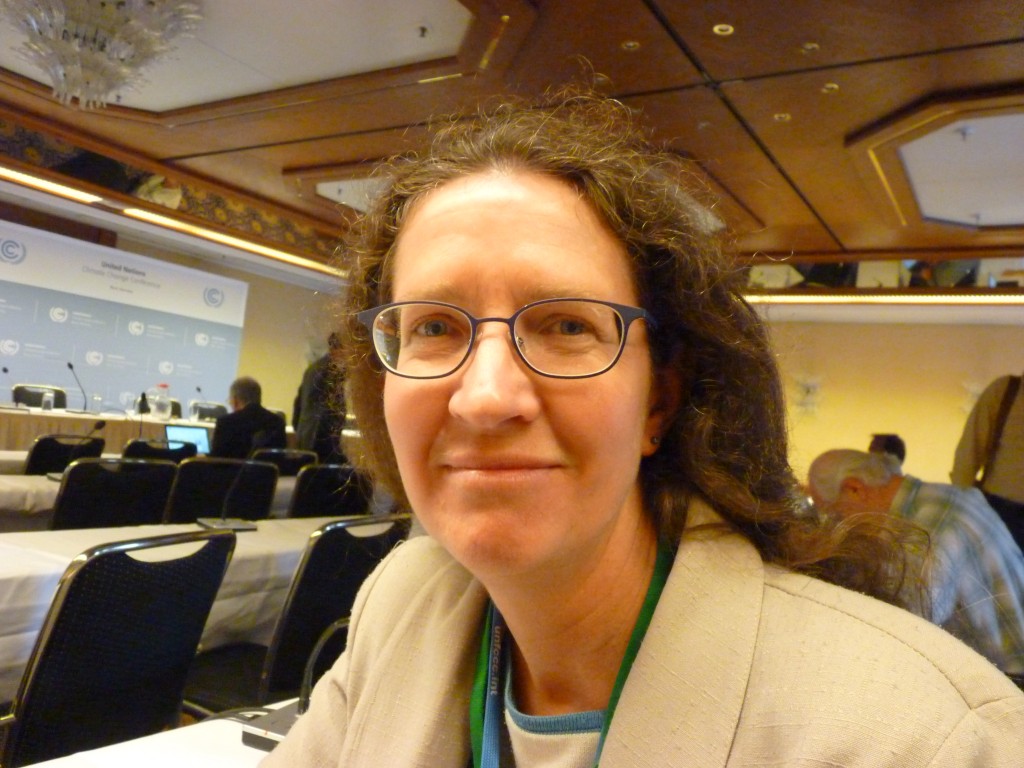
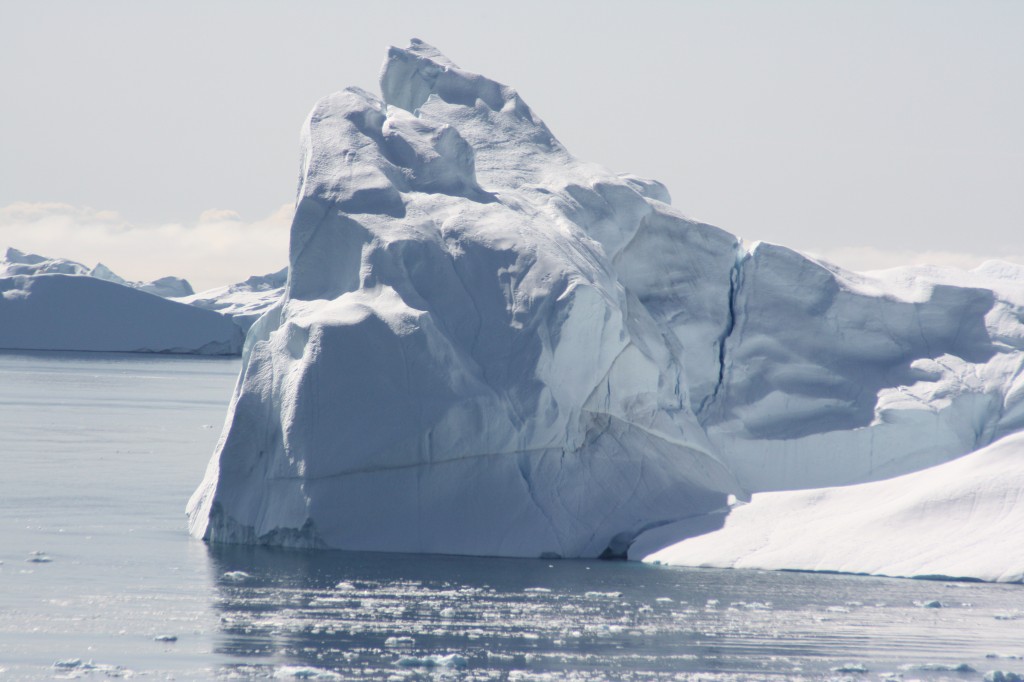
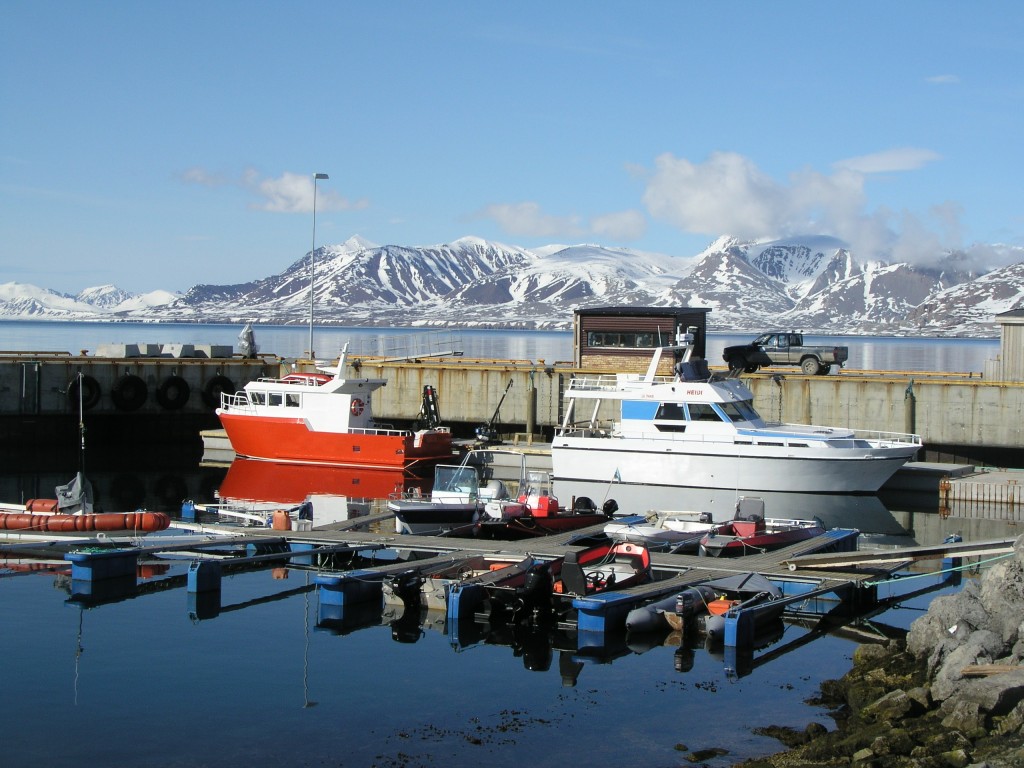
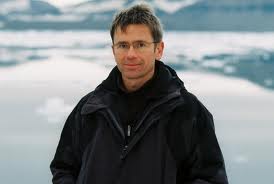

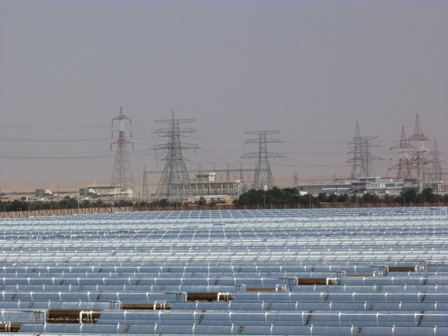
















Feedback